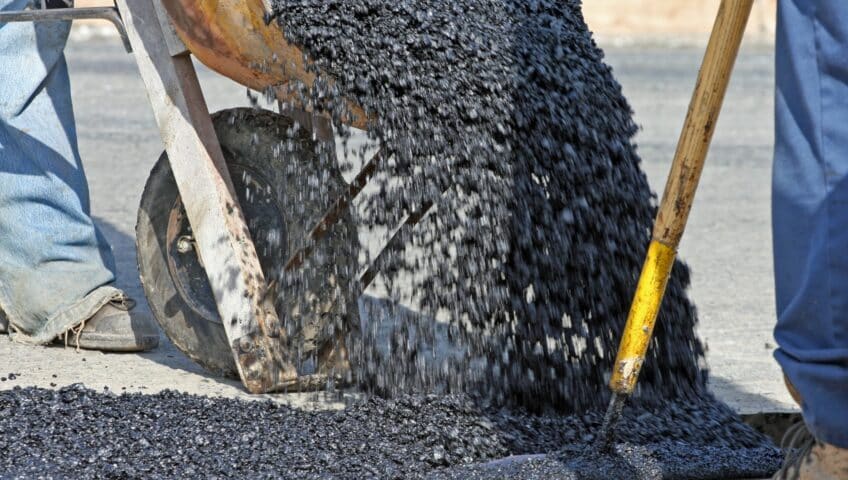
How Long Does It Take for Asphalt to Cure and Dry?
The journey from freshly laid asphalt to solid, resilient pavement involves a delicate dance between numerous factors. Understanding these variables will help you estimate and optimize your asphalt surface’s drying and curing times.
Weather Conditions
Weather conditions significantly influence the drying and curing of newly paved asphalt surfaces. Temperature, humidity, and sunlight all play critical roles in the following ways.
- Higher temperatures expedite moisture evaporation, accelerating both drying and curing processes.
- Bright sunlight aids curing by initiating chemical reactions that strengthen the asphalt.
- Conversely, low temperatures or high humidity can prolong these stages, slowing moisture evaporation and delaying chemical transformations.
Commercial property owners should closely monitor weather forecasts, aiming for warm, dry days to ensure efficient drying and proper curing. Collaborating with experts and adjusting construction schedules based on weather can help optimize the longevity and performance of asphalt surfaces.
Pavement Thickness
Thicker pavements naturally take longer to release moisture and reach full strength due to the additional time required for heat and moisture to penetrate through the entire depth of the pavement. Adequate curing is especially crucial for thicker pavements to prevent premature surface wear and cracking.
Expert Installation and Professional Equipment
Skilled contractors employ precise techniques and use high-quality equipment, which ensures proper temperature and compaction levels. Their expertise expedites moisture evaporation for quicker drying time and promotes uniform curing for a longer-lasting, durable asphalt surface.
How to Determine When Your Asphalt Surface Is Cured
Recognizing when your newly paved asphalt surface has completed its curing process will help ensure your business benefits from its optimal performance.
- Observe a change in color from dark black to a slightly lighter hue
- Feel that the surface has hardened and no longer feels tacky to the touch
- Look for the absence of imprints or marks left by light pressure
- Note that the surface is no longer giving off fumes
- Consult with asphalt professionals who can confirm that the pavement is ready for regular use
Potential Issues Arising from Insufficient Drying and Curing
The critical stages of drying and curing freshly paved asphalt are not to be taken lightly. Insufficient attention to these processes can lead to a cascade of problems that compromise the integrity and longevity of your pavement and, ultimately, your bottom line.
Reduced Pavement Lifespan
Failing to allow for curing can result in a weaker surface and premature deterioration. The asphalt’s ability to withstand traffic loads, temperature changes, and environmental stressors becomes compromised, leading to a shorter lifespan than anticipated.
Cracking and Rutting
Improper drying and curing lead to internal stresses that create cracks and allow ruts to form. These flaws and defects detract from its appearance and compromise its structural integrity.
Maintenance Challenges and Financial Implications
A poorly-cured asphalt surface requires more frequent and extensive maintenance. Whether it’s crack sealing, patching, or resurfacing, the ongoing repairs can quickly add up in terms of cost and disruption to your business’s operations.
Tips for Maintaining Asphalt as it Cures
Maintaining newly paved asphalt during the crucial curing phase is vital to ensuring the pavement’s long-term durability and performance. Here are some valuable tips to help you navigate this critical period and ensure a smooth, strong pavement that can withstand the rigors of time and traffic.
Be Patient and Limit Traffic
While it’s tempting to resume regular activities, exercising patience during the drying and curing period pays off. Rushing to open the pavement to traffic before it’s adequately dried and cured can have disastrous consequences. Restrict foot and vehicle traffic, particularly heavy loads, by establishing clear boundaries and signage to prevent premature use.
Avoid Sealing Too Soon
Applying seal coating prematurely can trap moisture beneath the surface, hindering the curing process. Consult with professionals to determine the appropriate time for seal coating based on the specific asphalt mix and weather conditions.
Prevent Water Accumulation
Standing water on the asphalt can hinder the curing process and lead to weakened spots. Ensure proper drainage and promptly remove any pooled water to allow the surface to dry uniformly.
Gentle Maintenance
If debris accumulates on the surface, use soft-bristle brooms or leaf blowers to remove it gently. Avoid using sharp objects that could scratch or damage the curing asphalt.
Collaborate with Professionals
Work closely with experienced asphalt contractors who can provide guidance on maintenance practices specific to your pavement type and local climate. Their expertise ensures that your efforts align with best practices.
High-Quality Asphalt Services in Wichita, Kansas
At South Central Sealing & Paving, we’re dedicated to providing the highest quality paving services for commercial property owners in Wichita, Kansas, and the surrounding area. We offer a full range of seal coating and asphalt paving services. Let us help you get the smooth, long-lasting asphalt paving your business needs. Contact us today to learn more about our commercial asphalt paving, maintenance, and sealing services.


